

ExpressVPN. Alcatel 3HE00004CA buy online now. Qualcomm Delivers Carrier Grade Home Wireless Mesh Networking. Today at Broadband World Forum 2017, Qualcomm Incorporated (NASDAQ: QCOM) through its subsidiary, Qualcomm Technologies, Inc., announced it is working with leading manufacturers to accelerate mesh network deployments by broadband service providers, and delivering new carrier-class video features.

With a growing slate of carrier customers, the company is introducing the Qualcomm® Video-Over-Mesh features, the industry’s first announced end-to-end video over wireless (VoW) solution that optimizes the delivery of video over mesh networks. “Qualcomm Technologies has been a driving force behind the Mesh Networking movement, and is now raising the bar by addressing the unique challenges of broadband carriers and their customers, including distributing video over mesh networks and enabling virtually seamless content across several screens, in addition to the televisions in the home,” said Irvind Ghai, vice president, product management, Qualcomm Technologies, Inc.
About Qualcomm. Telecom Infra Project – The Telecom Infra Project (TIP) is an engineering-focused initiative driven by operators, infrastructure providers, system integrators, and other technology companies that aim to reimagine the traditional approach to building and d. Internet Speed Test. Net2Plan - The open-source network planner. Floodlight OpenFlow Controller -Project Floodlight. Why Use Floodlight?

OpenFlow – works with physical- and virtual- switches that speak the OpenFlow protocolApache-licensed – lets you use Floodlight for almost any purposeOpen community – Floodlight is developed by an open community of developers. We welcome code contributions from active participants and we’ll openly share information on project status, roadmap, bugs, etc.Easy to Use- Floodlight is drop dead simple to build and run. Read through the Documentation (link)Tested and Supported – Floodlight is the core of a commercial controller product from Big Switch Networks (link) and is actively tested and improved by a community of professional developers. NetSurveyor 802.11 Network Discovery Tool.
Kismet. Wi-Fi (WLAN) Site Survey, Planning, Spectrum Analysis. Wi-Fi Inspector. Jennifer Rexford. Gordon Y.
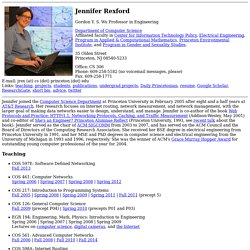
S. Wu Professor in Engineering Department of Computer Science Affiliated faculty in Center for Information Technology Policy, Electrical Engineering, Program in Applied & Computational Mathematics, Princeton Environmental Institute, and Program in Gender and Sexuality Studies. Amazon. OpenFlow » Enabling research with OpenFlow. These videos demonstrate different research experiments that build on top of OpenFlow.
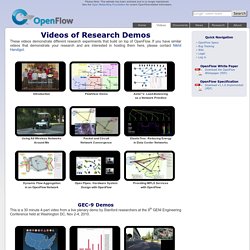
If you have similar videos that demonstrate your research and are interested in hosting them here, please contact Nikhil Handigol. Oreilly_tcpip_network_administration. OpenWrt. DPDK. Discover the Best Readings in Nanoscale Communication Networks. Free Dynamic DNS - No-IP.com - Managed DNS Services. Map Gallery. The SONET Home Page. Optical networks, DWDM, optical networking, optical DWDM networks, conferences, photonics, wavelength assignments, wavelength conversions, network protection and restoration, survivability, optical burst switchings, all optical packet s.
OMNeT++ Network Simulation Framework. Versatile Routing and Services with BGP: Understanding and Implementing BGP in SR-OS eBook: Colin Bookham: Amazon.co.uk: Kindle Store. Product Description Design a robust BGP control plane within a secure, scalable network for smoother services A robust Border Gateway Protocol setup is vital to ensuring reliable connectivity, an essential capability for any organization.
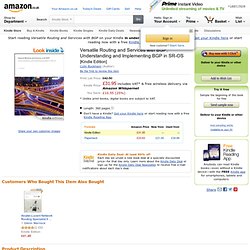
The Internet has become a necessary, always-on service in homes and businesses, and BGP is the protocol that keeps communication flowing. But BGP also has become crucial to delivery of intra-domain business services. Optical Network Design and Planning (Optical Networks) eBook: Jane M. Simmons: Books. Monarch Network Architects.
New Book Announcement for 2014 by Jane M.
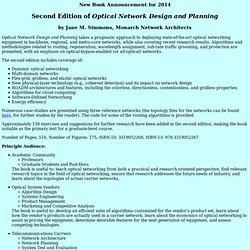
Simmons, Monarch Network Architects Optical Network Design and Planning takes a pragmatic approach to deploying state-of-the-art optical networking equipment in backbone, regional, and metro-core networks, while also covering recent research results. Algorithms and methodologies related to routing, regeneration, wavelength assignment, sub-rate traffic grooming, and protection are presented, with an emphasis on optical-bypass-enabled (or all-optical) networks.
The second edition includes coverage of: Net2Plan - The open-source network planner. Balancing CapEx reduction and network stability with stable routing–virtual topology capacity adjustment (SR–VTCA) Highlights A novel scheme in IP/WDM networks, called SR–VTCA, is studied for the CapEx cost scenario.
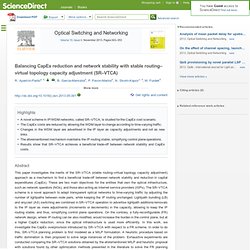
The CapEx costs are reduced by allowing the WDM layer to change according to time-varying traffic. Changes in the WDM layer are advertised in the IP layer as capacity adjustments and not as new links. The aforementioned mechanism maintains the IP routing stable, simplifying control plane operations.
Results show that SR–VTCA achieves a beneficial trade-off between network stability and CapEx costs. Abstract This paper investigates the merits of the SR–VTCA (stable routing–virtual topology capacity adjustment) approach as a mechanism to find a beneficial trade-off between network stability and reduction in capital expenditures (CapEx). Keywords Optical communications; Multi-hour traffic; Virtual topology design; Capacity adjustment; Stable routing; Traffic domination 1.
InterOperability Laboratory. PureLiFi™ pureLiFi Li-1st » pureLiFi™ International Journal of Computer Networks & Communications (IJCNC) Sin accesso o cobertura de ADSL? Amplia cobertura de internet por banda ancha vía satélite con skyDSL. Complex Adaptive Systems Modeling - a SpringerOpen journal. OpenOnload/EnterpriseOnload Application Accelerator. OpenOnload® application acceleration middleware significantly enhances application performance by improving network I/O latency, bandwidth, and message rates, while reducing CPU utilization all with no need to modify applications or change the network infrastructure.
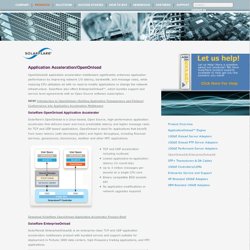
Solarflare also offers EnterpriseOnload™, which bundles support and service level agreements with an Open Source software subscription. NEW! Introduction to OpenOnload—Building Application Transparency and Protocol Conformance into Application Acceleration Middleware Solarflare OpenOnload Application Accelerator. InfiniBand. InfiniBand.
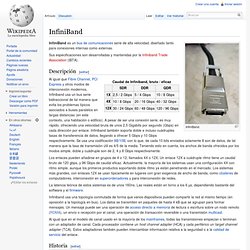
Sus especificaciones son desarrolladas y mantenidas por la Infiniband Trade Association (IBTA). Mininet: An Instant Virtual Network on your Laptop (or other PC) - Mininet.
TM Forum's MTOSI standard: Setting the Context. MTOSI stands for Multi-Technology Operations Systems Interface.
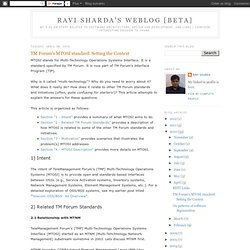
It is a standard specified by TM Forum. It is now part of TM Forum's Interface Program (TIP). Why is it called "multi-technology"? Why do you need to worry about it? What does it really do? Building Web Services with JAX-WS. Why CXF? With so many options available to developers today in the web services space, one of the questions worth asking is why should I use CXF? In no particular order, here are some of the reasons you might want to use CXF: CXF implements the JAX-WS APIs which make building web services easy. JAX-WS encompasses many different areas: Generating WSDL from Java classes and generating Java classes from WSDLProvider API which allows you to create simple messaging receiving server endpointsDispatch API which allows you to send raw XML messages to server endpointsMuch more... Spring is a first class citizen with Apache CXF.
Aegis Databinding (2.0.x) is our own databinding library that makes development of code-first web services incredibly easy. CXF enables the development of RESTful services via annotations using the HTTP Binding. Wireless Geographic Logging Engine - Plotting WiFi on Maps. News: Congrats to user 'fenebrae', our 150,000th user! Netstumble proud! Users make this whole thing possible. Ostinato - Packet/Traffic Generator and Analyzer. CFP Multi-Source Agreement - Press Releases. Curriculum of the Cisco Networking Academy. Setting up a CCNA Study Environment with GNS3 and VMware. If you were following my tweets over the last few days, you probably already know that I have been working on setting up a CCNA study environment using Ubuntu Linux, GNS3, and VMware Workstation.
After a couple days of difficulties, I finally managed to make it work last night. Here are the steps that I took to make it work. Before we start, there is the standard disclaimer: these are the steps that worked for me; these steps might or might not work for you, and are almost guaranteed not to work with different Linux distributions or different versions of the associated software. Here are the software components and versions that I am using in my environment: Ubuntu Linux 8.04.4 LTS, 32 bitGNS3 0.6.1Dynamips 0.2.8-RC2Dynagen 0.10.1.090807VMware Workstation 7.0.1 for Linux, 32 bit I won’t go into great detail on setting up Ubuntu Linux as there are plenty of resources available for that portion of this environment.
CCNA - Lab workbook. CCNA 5 – CCNA Study Guide.